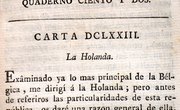Although first graders' understanding of parts of speech may be limited, many state-designed curriculum standards set forth specifics concerning verbs. As an example, by the end of first grade, students in Tennessee should be able to distinguish verbs from nouns and show a basic understanding of tense and subject/verb agreement.
Chant this rhyme for students and, over the course of a week, help them memorize it:
"A noun, a noun, a person, place or thing,
A verb, a verb, can run or fall or sing."
To demonstrate the point of the chant, ask students to walk, then fall and then sing. Next, brainstorm other nouns that can run; for example, cheetahs and motors run. Continuing with this concept, leaves and rain can fall; grandmothers and choirs can sing. Point out that the verbs all do something, but by themselves, the nouns cannot. For example, you might ask, "Can any of you cheetah?" The answer is no because "cheetah" is a noun and not a verb.
Provide students printed cards showing either an easy-to-read verb or a picture of a person performing an action. Then have kids act out their cards for the class. Have kids ask questions in the form of a question: "Are you bowling?" for example. That way they'll get away from guessing nouns, such as "bowling ball." Every so often direct kids to repeat the rhyme from Step #1 for reinforcement. Give them an opportunity to think up their own verb challenges for the class.
Bounce a ball around the room, using the present tense to identify what you are doing: "Today, I bounce this ball around the room." Ask kids this question: "If I did the bouncing yesterday and I want to tell somebody what I did, what would I say?" When kids answer: "I bounced the ball," your reply is that they are using past tense because it happened in the past. Then say, now I am using future tense: "Tomorrow I am going to bounce this ball." Play a game in which you perform more actions such as "Today, I clap my hands," noting that you are using present tense, and ask kids to call out the same sentence using past tense and then one using future tense. Slowly incorporate irregular past tense usages such as "bought" and "ate."
Explain the most basic idea of subject/verb agreement by placing two chairs at the front of the room. Write the words "sit" and "sits" on the board. Ask two students to sit in the chairs and then tell the class that you are going to read a sentence with a blank and they will shout out the correct missing word: "Tom and Wendy ____ in the chairs." Continue with other visual demonstrations, using one or two students for each. For example, you might use sentences with a student or students sharpening pencils, coloring, or reading.
Rotate the activities in Steps #1-4 throughout the school year, varying the examples. Give students the opportunity to use their skills in the game of Hidden Verb Errors. Provide pairs of students with simple short paragraphs and challenge them to find a certain number of errors. Following is a hidden three-verb-error puzzle: "Yesterday, Nina run to the store and will buy candy, but Robert and Kim get none."
Related Articles
References
- "Essentials of Elementary Language Arts"; Margo Wood; 1998
Writer Bio
Peggy Epstein is a freelance writer specializing in education and parenting. She has authored two books, "Great Ideas for Grandkids" and "Family Writes," and published more than 100 articles for various print and online publications. Epstein is also a former public school teacher with 25 years' experience. She received a Master of Arts in curriculum and instruction from the University of Missouri.











